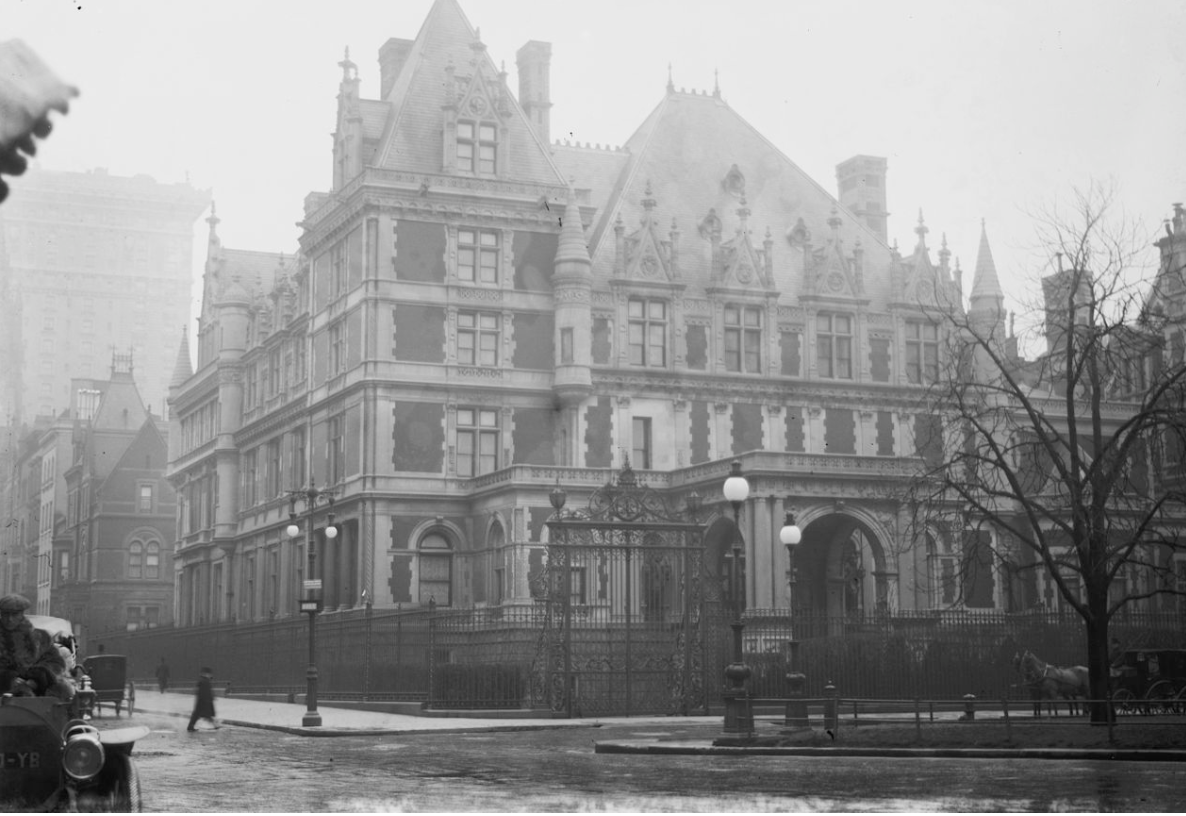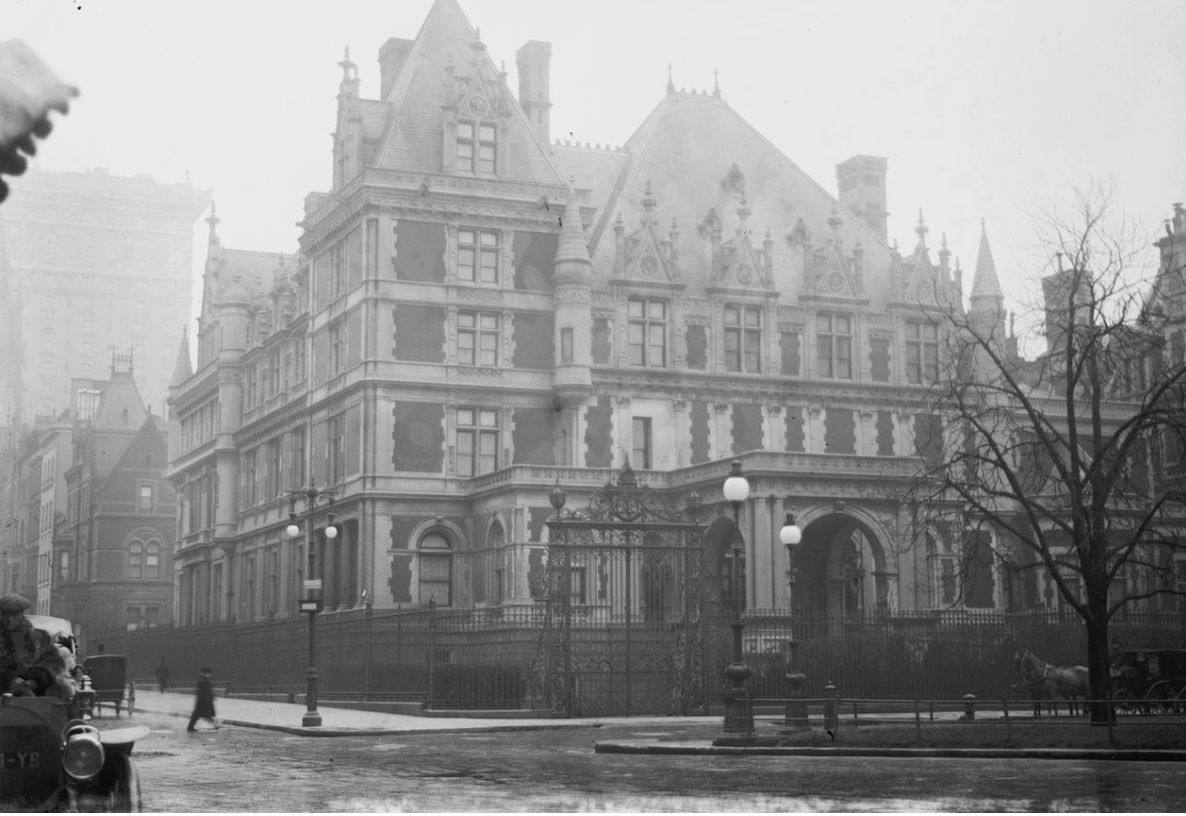
The townhouse, occupying the northwest corner of Fifth Avenue and 57th Street, was constructed for Cornelius Vanderbilt II, eldest grandson of the Commodore, Cornelius Vanderbilt, founder of the family fortune, in 1883. The ground level contained a drawing room, dining room (which doubled as the art gallery), and a reception room. The second floor housed a salon, a music room and a conservatory, while the family bedrooms were on the remaining floors.
Cornelius, feeling that others were trying to outdo his house, bought all the property on the 5th Avenue block. He then hired George B. Post and Richard Morris Hunt to construct a much larger mansion, filling the entire block front. The interiors were done by the French design firm Jules Allard and Sons, with many pieces in the house being imported from Europe. The first floor featured a five-story Caen stone entrance hall from which the principal rooms were accessed. These included the library, a small salon, grand salon, a watercolor room, two-story ballroom and a two-story dining room which doubled as the art gallery. Also on this floor were a two-story Moorish-inspired smoking room, a den, an office, a breakfast room and a pantry. On the second floor were Mrs. Vanderbilt’s bedroom, boudoir, bath, closet and dressing room. Mr. Vanderbilt’s bedroom was also on this floor, as well as his bathroom, dressing room, closet and private study. The house was six stories tall, not including the basement, and also had a stable and a private garden next door.
The Cornelius Vanderbilt II mansion was, and remains, the largest private residence ever built in New York City. Thirteen years after moving into his new mansion (he also lived in The Breakers, a 125,000 sq. ft. beach “cottage” in Newport, Rhode Island), Cornelius suffered a stroke which left him confined to a wheelchair for the remaining three years of his life. In his will he left his wife Alice Gwynne Vanderbilt a $7,000,000 trust fund and the use of 1 West 57th Street and The Breakers. After Cornelius died, Alice never remarried and continued to live in the mansion and in Newport but the house was never opened again to friends, and the only functions that are known to have happened there were the funerals of her two sons. Subsequently, it was just Alice and the 37 servants needed to run the mansion.Former front gate of the mansion, now at the 105 Street entrance to Central Park
As with the rest of the residences on Fifth Avenue, the mansion at 1 West 57th Street began to be encroached on by commercial skyscrapers; but Alice remained.
The trust fund Cornelius had left her produced a yearly income of $250,000, which was just enough to maintain both houses. Alice held on as long as she could, but was forced to sell it in 1926. She had no hope for the house’s preservation because she knew that developers, Braisted Realty Corporation (led by real estate developer Frederick Brown),[1] had paid a hefty $7,000,000 for the land, and not for the house that stood on it. A week before the wrecking ball was scheduled to demolish the 43-year-old home, Mrs. Vanderbilt arranged to have it opened to the public for fifty cents admission which would be donated to charity. Before selling it, she donated as many elements from the interiors as she could, including the baronial August St. Gaudens-designed fireplace and the Moorish ceiling piece from the smoking room. She also donated the 10-foot-tall metal front entryway gates. After being forced to sell the house for $7,000,000, she later bought the George J. Gould House for $800,000.

Cornelius Vanderbilt II (November 11, 1843 – September 12, 1899) was an American socialite, businessman, and a member of the prominent United States Vanderbilt family.[1] He was the favorite grandson of Commodore Cornelius Vanderbilt, who bequeathed him $5 million, and the eldest son of William Henry “Billy” Vanderbilt (who bequeathed him about $70 million) and Maria Louisa Kissam. In his turn he succeeded them as the Chairman and the President of the New York Central and related railroad lines in 1885.
